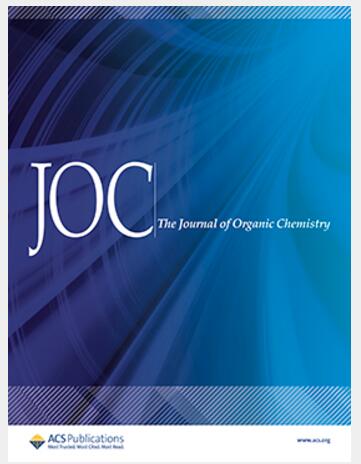Amine–MeOH Binary Systems as Catalysts for Cyclic Carbonate Formation from Epoxides and Carbon Dioxide: A DFT Mechanistic Investigation
IF 3.3
2区 化学
Q1 CHEMISTRY, ORGANIC
引用次数: 0
Abstract
The detailed mechanism of propylene carbonate (PC) formation from propylene oxide (PO) and CO2 is investigated using density functional theory (DFT) methods, catalyzed by amine/MeOH binary systems, in propylene oxide under conditions of room temperature and 1 atm. In these systems, amines (MeNH2, Me2NH, Me3N, and pyrrolidine) serve as nucleophiles, while MeOH acts as a hydrogen bond donor (HBD). The catalyzed reaction pathways for PC formation consistently proceed through two transition states, ts1 and ts2, corresponding to the oxide ring-opening and final ring-closing steps, respectively. The ring-closing step was identified as the rate-determining step in all amine/MeOH binary systems. Notably, the three aliphatic amine/MeOH binary systems significantly lower activation barriers for PC formation by approximately 20 kcal mol–1 compared to the uncatalyzed ring-closing pathway under standard conditions. The Me2NH/MeOH binary system demonstrates slightly higher catalytic efficiency than the MeNH2 and Me3N systems. Furthermore, the pyrrolidine/MeOH binary system exhibits comparable catalytic performance to the Me2NH/MeOH system. Since pyrrolidine is liquid under standard conditions, it can act as a homogeneous catalyst when paired with MeOH, enhancing mixing with PO and improving catalytic activity relative to gaseous Me2NH.

求助全文
约1分钟内获得全文
求助全文
来源期刊

Journal of Organic Chemistry
化学-有机化学
CiteScore
6.20
自引率
11.10%
发文量
1467
审稿时长
2 months
期刊介绍:
Journal of Organic Chemistry welcomes original contributions of fundamental research in all branches of the theory and practice of organic chemistry. In selecting manuscripts for publication, the editors place emphasis on the quality and novelty of the work, as well as the breadth of interest to the organic chemistry community.
 求助内容:
求助内容: 应助结果提醒方式:
应助结果提醒方式:


